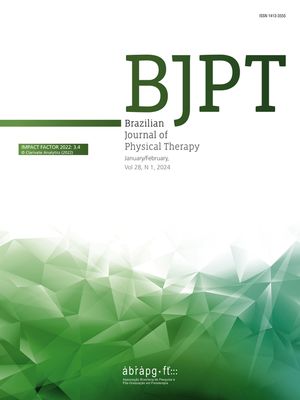
1st STUDENT SCIENTIFIC CONFERENCE OF THE BRAZILIAN ASSOCIATION FOR RESEARCH AND POSTGRADUATE IN PHYSIOTHERAPY (ABRAPG-FT)
More infoMusculoskeletal injuries affect a large part of the population and result from numerous causes. These individuals may develop kinesiophobia, leading to avoidance of body movements and physical activities because of pain, believing that this behavior can prevent the worsening of their condition or cause a new problem. Kinesiophobia can have a significant impact on an individual's quality of life, both physical and mental health.
ObjectivesInvestigate the demographic, clinical and psychological predictors of kinesiophobia in patients after musculoskeletal trauma to the upper and lower limbs.
MethodsThe study carried out with individuals after immediate musculoskeletal traumatic injuries in the Orthopedics and Traumatology Ward of HC/UFTM. We collect demographic data such as: age, gender, dominance and profession; clinical data, such as: pain intensity, pain categorization, type of surgical treatment, cause of injury, side of injury and body segment; and psychological data, such as: depression, anxiety, pain catastrophizing and kinesiophobia. Variables associated with kinesiophobia were analyzed using a multivariate linear regression model.
Results88 individuals were included, 73.9% male and 26.1% female. The multivariate linear regression model that showed statistical significance with the highest R2 value (R2 = 0.383; adjusted R2 0.312) considering kinesiophobia as a dependent variable included nine independent variables: surgical treatment, affected side, dominance, anxiety and depression, affected segment, gender, pain intensity, cause of injury and pain catastrophizing. In this model, the predictive variables that showed statistical significance were: anxiety and depression (p = 0.255; β = 0.050), female gender (p = -0.191; β = 0.048) and pain catastrophizing (p = 0.350; β = 0.010).
ConclusionAmong the studied predictors, we believe that female gender, pain catastrophizing and higher levels of anxiety and depression are important predictors of kinesiophobia in patients after musculoskeletal trauma in the upper and lower limbs.
ImplicationsWe believe that health professionals who deal with musculoskeletal trauma patients are aware of the variables that can predict kinesiophobia, as well as use these assessment tools to help patients with their fear and movement avoidance behaviors.
Conflict of interest: The authors declare no conflict of interest.
Acknowledgment: The authors thank all research participants. To FAPEMIG for research funding (EDITAL 001/2021 - DEMANDA UNIVERSAL APQ 00444-21).
Ethics committee approval: Research Ethics Committee of the Federal University of Triângulo Mineiro (CAAE: 49879821.9.0000.5154).





